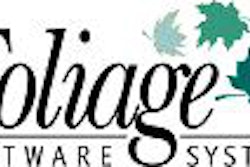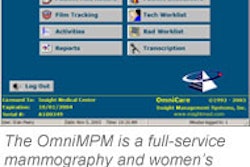MIAMI BEACH, FL - Radiologists should take as much care with their final reports as they do with their image acquisition, according to the new president of the American Roentgen Ray Society.
In his presidential address Sunday, Dr. Christopher Merritt urged all imaging specialists to apply CT techniques to reporting, making every effort to maximize signal-to-noise ratio, i.e., communicate clear results with as little background clutter as possible.
"We won't extract information from a noisy CT image," said Merritt, who is the vice-chair and director of clinical informatics at Thomas Jefferson University in Philadelphia.
"The same should hold true of a radiology report. Our goal should be the highest possible signal with the lowest possible noise."
In Merritt's estimation, a report's "signal" would consist of objective findings, diagnosis and impressions, pertinent negative findings, and relevant and/or actionable incidental findings. Unnecessary text, equivocation ("most likely," "possibly"), nonstandard terminology, and poor structure and organization count as "noise."
Paying greater attention to reporting is crucial for a variety of reasons. First, the report is a synthesis of clinical information and images that is disseminated to multiple parties -- referring physicians, patients, administrators, and, in some cases, legal experts.
Second, referring physicians expect a report to do more than merely offer a diagnosis, Merritt pointed out. They may use the information to guide treatment, determine response to therapy, or schedule follow-up.
Merritt outlined some of the rudimentary characteristics of an ideal radiology report: accurate, relevant, informative, clear and concise, well organized, and timely. Much of this can be achieved with proper report structuring. But for some time, the most universal form of reporting has been narrative prose.
Instead, Merritt put forth the concept of a structured report in an itemized format. For example, a CT report of the chest, abdomen, and pelvis could easily get bogged down in the wordiness of narrative description. Itemizing the findings, and breaking them down by anatomy, would help the clinician extract relevant findings.
Merritt also emphasized that imaging specialists should begin to look to the future with structured databases and DICOM. In addition to improving a radiologist's ability to communicate, capturing patient information in a database would allow data mining for research, improve coding and billing, and steer institutional planning and marketing, he said.
Merritt cited the BI-RADS lexicon and certain ultrasound exams that take qualitative measurements (carotid Doppler) as instances of effective data-driven reports already in use.
DICOM reporting represents the ultimate synthesis of clinical information and images, using images linked to, or embedded in, the text, he said. Speech recognition and natural-language processing are two additional technologies that will help bring radiology's 19th century reporting methods into the 21st century. While imaging technology has advanced by leaps and bounds, the report has historically has been left behind.
"The radiology report has not changed in about 100 years, but radiology has changed tremendously," Merritt said. Generating the report "is probably one of the most important activities that a radiologist performs…. We need to be more critical of the reports and the image that we convey."
By Shalmali Pal
AuntMinnie.com staff writer
May 3, 2004
Copyright © 2004 AuntMinnie.com



















